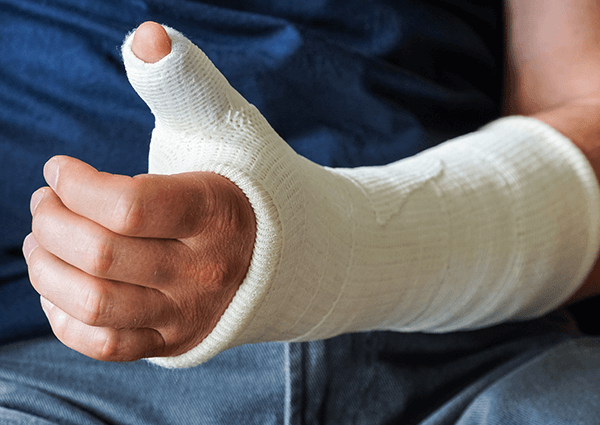How do you break your hand?
The hand is an intricate framework of bones and soft tissue that enable basic and complex movements that affect our everyday life. Any time you pick up a pencil, drive a car, throw a baseball or hold a bag of groceries, this network of moving pieces is at work to help aid in these common functions. Because our hands are used so often for so many different daily tasks, they’re susceptible to breaks that may require intervention by an orthopaedic physician. When you sustain a broken hand, broken wrist, or broken finger, it’s important to consult a trained hand surgeon who treats your specific injury.
How to tell if your hand or finger is broken
Several different types of breaks may be prevalent in the hand and wrist. Hairline fractures may be barely noticeable and heal on their own. Stable fractures occur when bones break but remain properly aligned. Unstable breaks occur when bones become dislodged to a degree that they shift from their natural alignment. The bone may also be disrupted so that it becomes shattered into several pieces.
Symptoms may include pain, swelling, visible deformity (such as a displaced bone or skin puncture), and discoloration. The hand may be difficult to move.
How to diagnose a broken hand or broken finger
Your physician will perform a visual examination and order X-ray imaging to conclude the type and severity of your fracture. Visible deformity seen upon the physical examination of the hand may confirm the presence of a break. In some cases, though, no visible signs may be present. If you sustain an open compound fracture, where bone pierces through the skin, please go to an emergency room for immediate treatment. For finger fractures, the finger may or may not be crooked.
How to treat a broken hand or broken finger
A variety of factors will determine your recommended course of care. For severe breaks that result in instability or displacement, surgery to insert a metal plate or pins may be necessary to set the bones in proper alignment during healing. For non-severe breaks that are stable, casting or splinting may be necessary. Most patients recover within three to six weeks. Hand therapy may be beneficial after the injury is treated. Patients should seek medical attention quickly after sustaining a broken hand, wrist or finger. If left untreated, the fracture may not heal properly resulting in limited function or physical deformity indefinitely.

